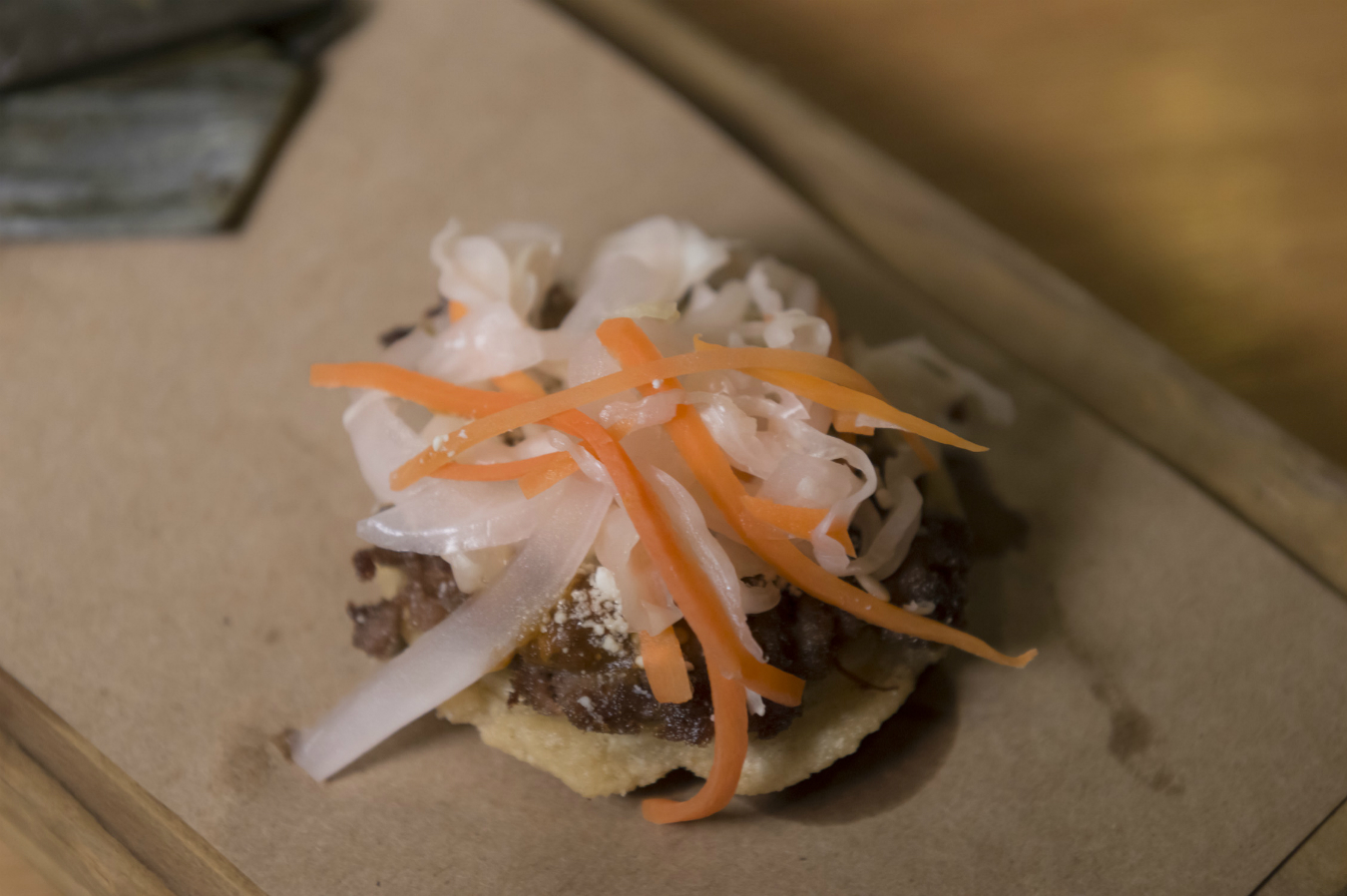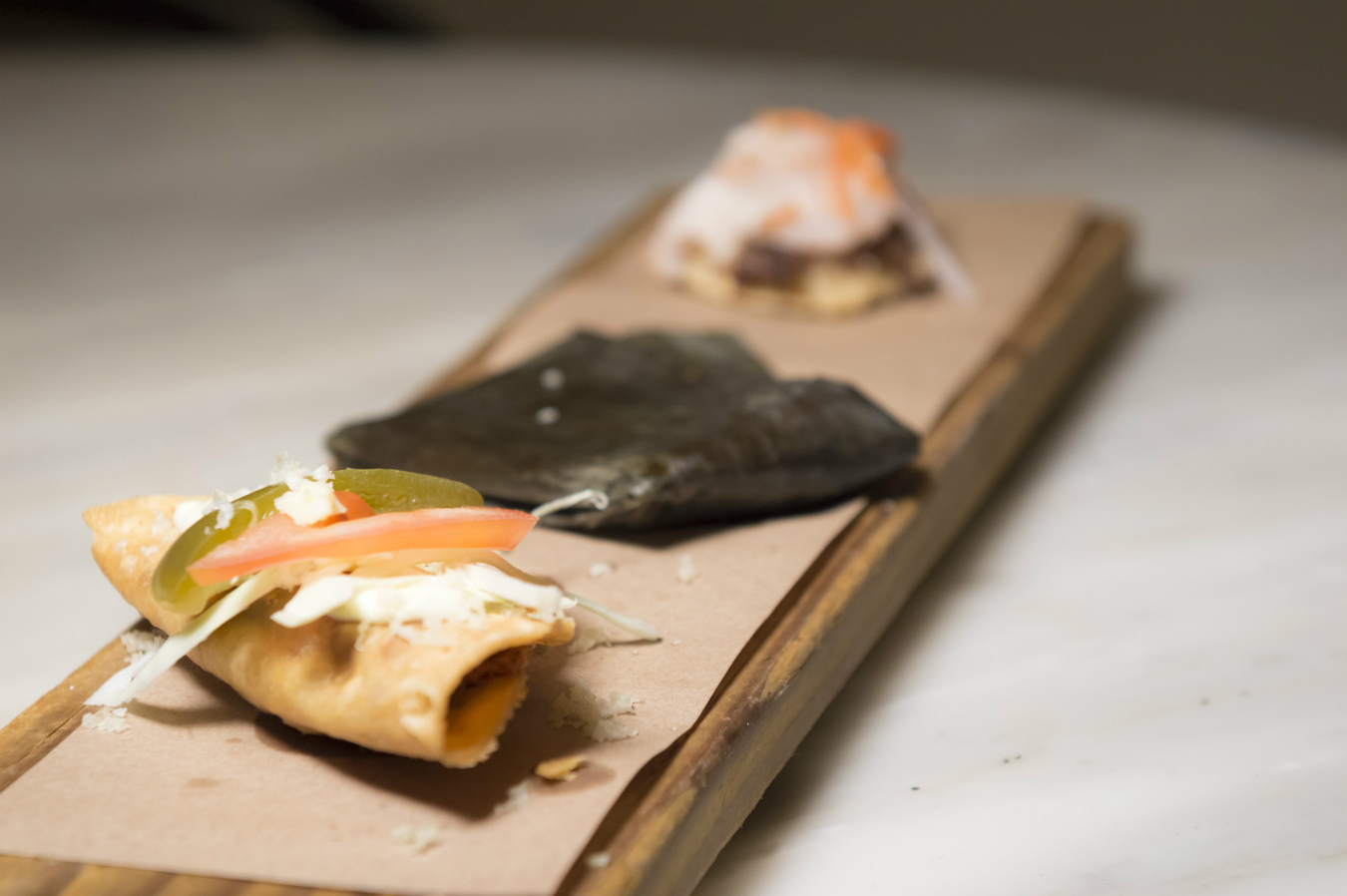“How many herbs do you use in the kitchen? Do you know?”
Mexican chef Jose Manuel Baños asks me the questions, and the curled, waxed tips of his mustache bob up and down as he talks. I stutter, sheepishly admitting there are probably only about four herb staples in regular rotation at my house.
“Okay,” he says without judgement. “In Oaxaca, where I am, we use 552 kinds of herbs to cook. The importance of Mexican food is the ingredients, the herbs.” Baños is the chef at Pitiona, a hot spot that gives traditional Oaxacan cuisine a modern spin, but right now he is sitting here, at the back table of La Mezcaleria Gastown, taking a moment’s break from cooking for a preview of Sabores CDMX.
Sabores CDMX is a dining series that takes chefs from Mexico City and its outlying areas and brings them to partner cities around the world, allowing them to cook for new audiences and share the depths of Mexican cuisine. After all, it’s not all just taquitos and burritos. “For me it’s an honour to come to Canada and cook the real Mexican food,” Baños says. “Because in Canada, or other countries in the world, they think Mexican food is fajitas, nachos, guacamole, and chili con carne.”
Baños spent three recent evenings cooking a special tasting menu at Homer St. Cafe and Bar (other participating restaurants were Burdock and Co., which hosted Mario Espinosa, and Cacao, which hosted Gerardo Vázquez Lugo). The meal began with an “Oaxaca entrée trilogy” made up of a delicious and crunchy fried “garnacha” with beef and cabbage, a “pescadilla” with salad and fresh pressed cheese, and a salty pork tamale with “abodo costeño”. Next came Frijolón soup: dark, rich, warm bean soup with fresh melting cheese, fried tortilla strips, and “hierba de conejo”—a perfect antidote to the snowstorm that was occurring outside. The main course featured a taco trio, because you have to give the people what they want (and I admit, I did want tacos): sumptuous chicken in thick black mole, tender pork in “chicatana” ant mole (surprisingly delightful), and juicy stewed beef tongue. It all wrapped up with “Pumpkin Candy” for dessert: soft, melt-in-your-mouth pumpkin with cinnamon and surrounded by tangy “piloncillo”. Paired with a mezcal margarita, the meal was fresh, inventive, and wildly different than any Mexican cuisine we are used to seeing in Vancouver.
“I want to teach the greatness of Mexican food to people,” Baños emphasizes. “It is one of the most important cuisines in the world, the same quality of French food or Chinese food.” He is no stranger to high-stakes cooking, having worked in some of the world’s most renowned restaurants, including Arzak and El Bulli. But Pitiona is his baby, his spot, and it’s where he can flex his creative muscles. It’s where he can be himself. “For me, the kitchen is freedom—more freedom than any other job in the world gives me,” says Baños. “For me, the kitchen is happiness.”
Still hungry? Read more about food.











